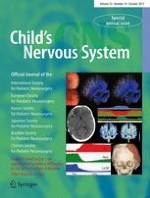Erschienen in:

01.10.2017 | Special Annual Issue
A survey on pediatric brain death and on organ transplantation: how did the law amendment change the awareness of pediatric healthcare providers?
verfasst von:
Takashi Araki, Hiroyuki Yokota, Koutaro Ichikawa
Erschienen in:
Child's Nervous System
|
Ausgabe 10/2017
Einloggen, um Zugang zu erhalten
Abstract
Objectives
In Japanese society taking a cautious attitude towards organ transplantation, we investigate how amendment of the Organ Transplant Law which legalized brain death (BD) determination criteria changed the awareness concerning BD and organ transplantation of pediatric healthcare providers.
Methods
The questionnaire survey adopted the bearer method and was sent to members of the Japanese Society of Emergency Pediatrics (JSEP). In both the surveys of 2008 and 2016, the same item “Questionnaire survey on BD and organ transplant” was disseminated. We compared the responses of the two surveys. Statistical analysis was performed using chi-square test. Significance was observed when p value was less than 0.05.
Results
Comparison of the results of the two surveys in this study showed a change in awareness of BD/organ transplantation held by pediatric healthcare providers in Japan. It was suggested that Japanese pediatric healthcare providers tend to explain to the family that it is BD with incomplete diagnosis of BD. In the 2016 survey, there is an increase in the response “There is experience of children diagnosed with BD” and it might be due to the effect of the amendment of the law (p = 0.0038).
Conclusion
In July 2010, the “Amendment of the Organ Transplant Law” became effective, and it became possible to provide organs with family member consent even if the intention of the patient to provide organs was unknown. Since this amendment made it possible to provide children under 15 years of age with BD donors, we assumed that there was a change in awareness concerning BD determination and organ transplantation for pediatric healthcare providers.











